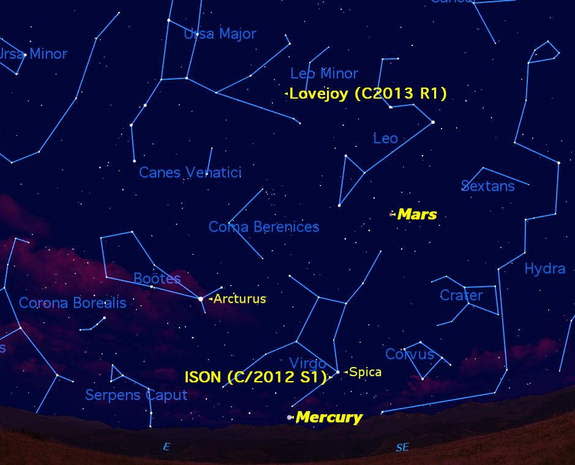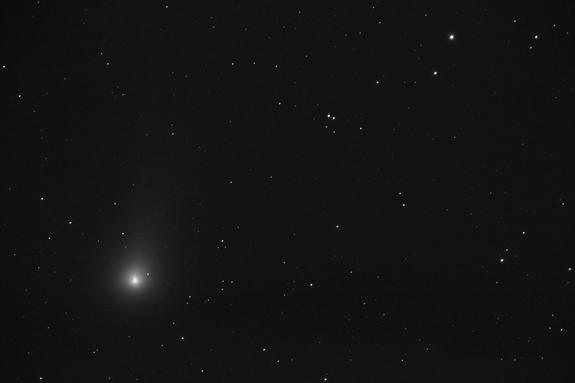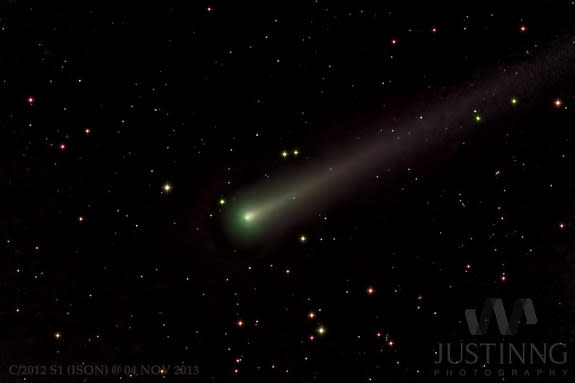See Two Comets and Planet Mercury in Pre-Dawn Sky This Week
This week in the hour before sunrise early morning stargazers will get a double treat: the planet Mercury and two special comets.
Mercury will be in one of its best locations in 2013 for spotting. The planet closest to the sun never strays very far into the night sky. It can only be glimpsed on rare occasions when it is at its farthest from the sun, and then only when its angle with the horizon is right.
This week is one of those rare, perfect opportunities for observers in the Northern Hemisphere, the only catch being that you need to be up an hour before the sun to take advantage of it. The best time to spot Mercury is about half an hour before sunrise. Any earlier, and it is too close to the horizon, but any later and the rising sun will swamp its tiny light. [Amazing Comet Photos of 2013 by Stargazers]
This week there is an extra treat to entice you to get up early. Not just one, but two comets are visible in binoculars.
The first is the potentially amazing Comet ISON, expected to possibly make a bright showing at the end of November and early in December. ISON is not currently visible to the naked eye, but some observers report that it is brightening well. This week, skywatching experts reported that Comet ISON is now visible through binoculars, as well as telescopes.
Discovered in 2012, Comet ISON is headed for a close encounter with the sun on Nov. 28, when it will approach within 730,000 miles (1.2 million kilometers) of the solar surface. Astronomers and stargazers have been tracking the comet since its discovery in the hopes that it may flare up into a spectacular night sky sight. The comet's official designation is C/2012 S1 (ISON).
Comet Lovejoy is the second comet gracing the morning sky this week. Officially known as C/2013 R1, the comet was discovered on Sept. 7 by Australian amateur astronomer Terry Lovejoy.
Both comets are moving rapidly, so their position will be changing day by day. On Monday (Nov. 18) morning, when Mercury is best placed, Comet ISON will be just 3 "moon-widths" east (towards the eastern horizon) of the bright star Spica.
Comet Lovejoy will be much higher in the sky at that time, passing just about half way between the Big Dipper and the constellation Leo . Both should be easily visible in 7x50 binoculars, and possibly even to the naked eye.
Editor's note: If you snap an amazing picture of Comet ISON, Comet Lovejoy, Mercury or any other night sky view that you'd like to share for a possible story or image gallery, send photos, comments and your name and location to managing editor Tariq Malik at spacephotos@space.com.
This article was provided to SPACE.com by Starry Night Education, the leader in space science curriculum solutions. Follow Starry Night on Twitter @StarryNightEdu. Follow us @Spacedotcom, Facebook and Google+. Original article on SPACE.com.
Copyright 2013 SPACE.com, a TechMediaNetwork company. All rights reserved. This material may not be published, broadcast, rewritten or redistributed.



